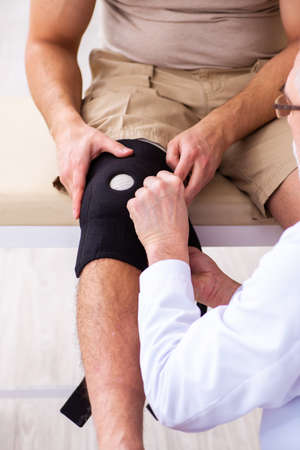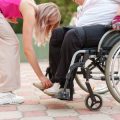Understanding Neuropathic Pain in Older People
Neuropathic pain, often described as burning, shooting, or tingling sensations, arises when nerves within the body become damaged or dysfunctional. Among older adults in the UK, this type of pain is a significant concern, affecting daily comfort and quality of life. It can result from a range of conditions commonly seen in British clinical practice, including diabetes, shingles (post-herpetic neuralgia), and stroke. Recent studies suggest that up to 8% of older Britons experience neuropathic pain, with numbers expected to rise as the population ages.
Recognising neuropathic pain can be particularly challenging, as its symptoms may be mistaken for general aches associated with ageing or other chronic conditions. Key indicators in a British healthcare setting include persistent discomfort despite standard pain relief, altered sensations such as numbness or hypersensitivity to touch, and difficulties with mobility or sleep. Healthcare professionals in the UK are trained to look for these hallmark features during consultations, especially when older patients describe pain that does not respond well to common analgesics.
The prevalence of neuropathic pain among older people underscores the importance of early identification and tailored management. Understanding these unique signs and symptoms is the first step towards compassionate care and effective support for older adults living with neuropathic pain across Britain.
2. Recognising and Diagnosing Neuropathic Pain
In the UK, general practitioners (GPs) and healthcare professionals play a central role in recognising and diagnosing neuropathic pain among older Britons. Neuropathic pain, often described as burning, tingling, or shooting sensations, can be particularly challenging to identify in older adults due to overlapping health conditions and atypical presentations. Early recognition is vital for effective management, yet several barriers can make diagnosis more complex in this age group.
Approach to Assessment
GPs typically begin with a comprehensive medical history and physical examination, considering any underlying conditions such as diabetes, shingles, or previous injuries that may contribute to nerve damage. In the context of the NHS, careful attention is paid to medication reviews and social circumstances that may impact symptom reporting.
Common Diagnostic Challenges
| Challenge | Impact on Older Britons | Suggested Approach |
|---|---|---|
| Atypical Presentation | Pain may be mistaken for arthritis or general ageing discomforts | Use targeted questioning about sensation quality and pain triggers |
| Cognitive Impairment | Difficulties in describing symptoms clearly due to dementia or memory issues | Engage carers/family members and use simple language or visual scales |
| Multiple Co-morbidities | Pain may overlap with other chronic conditions, complicating assessment | Holistic review of all health problems; multidisciplinary involvement when necessary |
| Reluctance to Report Pain | Cultural norms or fear of ‘bothering’ the doctor can lead to underreporting | Create a supportive atmosphere; reassure that their comfort is a priority |
The Role of Assessment Tools in the UK Setting
Validated tools such as the Leeds Assessment of Neuropathic Symptoms and Signs (LANSS) or the Douleur Neuropathique 4 (DN4) questionnaire are increasingly used across British primary care settings. These tools help GPs distinguish neuropathic pain from other types of chronic pain by focusing on specific symptoms and clinical signs.
Ultimately, recognising neuropathic pain in older adults requires patience, keen observation, and collaborative communication between patient, family, and healthcare teams. By understanding the typical challenges faced by older Britons, healthcare professionals can ensure timely diagnosis and compassionate support at every stage.
![]()
3. Medical Treatments and NHS Care Pathways
When it comes to managing neuropathic pain in older Britons, the NHS offers a thoughtful combination of pharmacological and non-pharmacological treatments. The approach is designed with compassion, taking into account the unique needs of each individual, especially older adults who may have additional health considerations.
Pharmacological Options Available Through the NHS
The first step for many is medication. The NHS commonly prescribes medicines such as amitriptyline, duloxetine, gabapentin, or pregabalin to help manage neuropathic pain. These drugs are chosen carefully, considering factors like other medications the person may be taking, possible side effects, and any existing health conditions. For some older adults, lower starting doses and gradual increases are recommended to minimise side effects and ensure safety. Regular reviews with GPs or pain specialists are a key part of this process, ensuring that the treatment remains appropriate and effective over time.
Non-Pharmacological Therapies
The NHS also recognises the value of non-drug approaches. Physiotherapy can be particularly beneficial in maintaining mobility and reducing discomfort. Occupational therapy may support older people in adapting their homes and daily routines to manage pain better. Psychological therapies such as cognitive behavioural therapy (CBT) are sometimes offered to help individuals cope with the emotional impact of chronic pain. Additionally, pain management programmes—often run by multidisciplinary teams—provide education and group support to help older adults build confidence in managing their symptoms.
Developing Tailored Care Plans
No two people experience neuropathic pain in exactly the same way. That’s why NHS care pathways focus on developing personalised plans for each individual. After a thorough assessment—including medical history, physical examination, and sometimes specialist referral—a bespoke combination of treatments is drawn up. These plans often include regular check-ins with healthcare professionals to monitor progress and adjust therapies as needed.
Supportive Community Resources
Beyond direct medical interventions, the NHS works closely with local community services and charities across the UK to offer additional support for older adults living with neuropathic pain. This might include befriending services, exercise classes tailored for seniors, or advice on social care options—ensuring that nobody faces their journey alone.
4. Supporting Wellbeing Beyond Medication
Living with neuropathic pain can be challenging, especially for older Britons who may already be managing other health conditions. While medication is often a key part of treatment, many find their quality of life improves when they explore additional supportive approaches. The British healthcare system encourages a holistic perspective, placing value on therapies, self-care strategies, and community resources that nurture both physical and emotional wellbeing.
Complementary Therapies Commonly Used in the UK
Many older adults in Britain turn to complementary therapies to help ease neuropathic discomfort. These approaches are often recommended as adjuncts to conventional medicine rather than replacements. Below is an overview:
| Therapy | Description | Availability |
|---|---|---|
| Physiotherapy | Exercises and movement guidance to improve strength, mobility, and manage pain levels. | NHS referral or private clinics |
| Acupuncture | A traditional Chinese medicine technique used for pain relief by stimulating specific body points. | NHS (select areas) or private practitioners |
| Aromatherapy & Massage | Use of essential oils and gentle touch to reduce stress and promote relaxation. | Community centres or local therapists |
| Meditation & Mindfulness | Mind-body practices that support coping skills and emotional resilience. | NHS-recommended online resources or local groups |
Self-Management Strategies for Everyday Living
The NHS and organisations such as Age UK encourage individuals to take an active role in managing their pain. This might include:
- Pacing activities: Balancing activity with rest to avoid overexertion.
- Maintaining social connections: Staying in touch with friends or joining local interest groups to reduce isolation.
- Gentle exercise: Walking, swimming, or chair-based exercises tailored to individual ability levels.
- Pain diaries: Keeping track of symptoms to identify triggers and effective coping methods.
- Nutritional awareness: Eating a balanced diet that supports overall health and energy levels.
Local Support Resources for Older Adults in Britain
The UK is home to a rich network of support services designed specifically for older adults living with chronic pain conditions. Some useful contacts include:
| Resource | Description | Contact/Access Point |
|---|---|---|
| NHS Pain Management Services | Specialist clinics providing multidisciplinary care plans including counselling and therapy. | NHS GP referral required |
| Pain Concern (Charity) | Information, helplines, and peer support for those living with persistent pain. | painconcern.org.uk |
| Age UK Local Branches | Advice, befriending schemes, activity groups, and advocacy services for older people. | Find your local branch online |
| Council-run Community Centres | Coffee mornings, gentle exercise classes, and information sessions on long-term condition management. | Your local council website or community noticeboard |
A Gentle Reminder: Personalising Your Approach
No single strategy works for everyone. It’s important to talk through new ideas with your GP or specialist nurse before making changes to your routine. Many older adults find combining several supportive measures brings the greatest relief—whether it’s joining a local walking group, trying a mindfulness app recommended by the NHS, or simply reaching out for a friendly chat at a community centre. Remember: you are not alone on this journey, and there is help available every step of the way.
5. Family, Carer, and Community Involvement
When it comes to managing neuropathic pain in older Britons, the involvement of family, carers, and community groups cannot be overstated. The journey with chronic pain is rarely one that should be travelled alone; rather, it is a shared experience that benefits greatly from the compassion, understanding, and support of those around us. In the UK, family members often play a central role in recognising changes in a loved one’s health or behaviour, helping facilitate communication with healthcare professionals and ensuring that day-to-day needs are met. Their gentle advocacy can make a significant difference in ensuring older adults receive timely and appropriate care.
Carers—whether they are relatives or professional support workers—are invaluable partners in pain management. They provide practical assistance with medication routines, mobility support, and emotional reassurance during difficult moments. Their presence offers comfort and stability, especially when neuropathic pain can feel unpredictable or overwhelming. Many carers in Britain find guidance and camaraderie through local carer support networks or charities such as Carers UK and Age UK, which offer information, respite options, and peer support.
Community groups also play an important role in long-term care for older people living with neuropathic pain. Local clubs, faith-based organisations, and neighbourhood initiatives not only combat isolation but also foster a sense of belonging and mutual aid. Across Britain’s diverse communities, there is a deep-rooted tradition of looking out for neighbours—a value that remains relevant today. Community centres may host exercise classes tailored for those with limited mobility or facilitate pain management workshops led by healthcare specialists. Such activities encourage older adults to remain engaged socially and physically active within their capabilities.
Culturally, long-term care in Britain balances personal independence with collective responsibility. While many older people wish to remain at home as long as possible—a concept known as “ageing in place”—there is growing awareness of the need for coordinated community resources to supplement what families can provide. This approach respects individual dignity while acknowledging that everyone deserves access to adequate support systems when facing complex health challenges like neuropathic pain.
Ultimately, open communication among all involved parties—older persons themselves, their families, carers, and local community organisations—helps build a supportive environment where effective pain management strategies can flourish. By nurturing these relationships and respecting cultural attitudes towards care, we can ensure that no one feels left behind on their journey toward comfort and wellbeing.
6. Addressing Social Isolation and Mental Health
Living with neuropathic pain can be emotionally taxing, particularly for older Britons who may already face the challenges of reduced mobility and changes in social circles. The persistent discomfort often leads to feelings of frustration, anxiety, and even depression. For many, the pain is not just physical—it can create a sense of isolation that makes everyday life feel overwhelming.
Recognising the Emotional Impact
It is important to acknowledge that neuropathic pain can deeply affect mental health. Older adults might withdraw from social activities or hobbies they once enjoyed due to fear of exacerbating pain or because of fatigue. In the UK, where independence and community involvement are highly valued, this withdrawal can be particularly distressing. Open conversations with GPs, carers, and family members about emotional wellbeing are essential steps in addressing these concerns.
Accessing UK-Specific Mental Health Support
The NHS provides various mental health services tailored for older people experiencing chronic pain. Local GPs can make referrals to talking therapies such as Improving Access to Psychological Therapies (IAPT), which includes cognitive behavioural therapy (CBT) and counselling. Many local authorities offer free or low-cost support groups where individuals can share experiences and coping strategies in a safe, understanding environment.
Befriending Services: A British Tradition of Companionship
Befriending services play a vital role in reducing loneliness among older adults living with chronic pain. Charities like Age UK and The Silver Line offer telephone befriending schemes, connecting individuals with friendly volunteers for regular chats. These simple acts of companionship can lift spirits and provide valuable emotional support, reminding older adults that they are not alone on their journey.
Community Connections Matter
In addition to professional support, community centres and local faith groups across Britain frequently run coffee mornings, gentle exercise classes, and creative workshops designed to be inclusive for those managing long-term conditions. Participating in these activities not only helps maintain social ties but also fosters a sense of belonging and purpose.
If you or someone you care for is struggling with the emotional effects of neuropathic pain, know that help is available. Reaching out—whether through your GP, local charities, or community networks—can make a meaningful difference in maintaining both mental health and quality of life.
7. Navigating Practicalities and Advocacy
Living with neuropathic pain as an older Briton often means managing not just health concerns, but also the practicalities of daily life. Understanding the support available and knowing how to advocate for yourself or your loved ones can make a significant difference in quality of life.
Accessing UK Benefits
The UK offers several benefits that may help ease the burden of living with chronic pain. For those over State Pension age, Attendance Allowance provides financial assistance to help with personal care needs. If you are under State Pension age, Personal Independence Payment (PIP) may be available. Carer’s Allowance can also provide support if a family member or friend is helping with care needs. Applying for these benefits can seem daunting, but Citizens Advice and Age UK offer clear guidance and can assist with applications.
Utilising Local Authority Services
Your local authority can be a vital source of help. Social services departments can assess your needs and arrange for aids and adaptations in your home, such as grab rails or stairlifts. They may also provide home care visits, respite care, or day centre opportunities to reduce isolation and support independence. It’s important to ask for a Care Needs Assessment—this is your right as a resident in the UK.
Advocacy: Speaking Up and Seeking Help
Sometimes, it’s necessary to advocate for yourself or a loved one to ensure needs are met. Keep a diary of symptoms and challenges to share during medical appointments or assessments. Don’t hesitate to ask questions, request second opinions, or bring someone you trust to appointments for support. Organisations like Independent Age, Healthwatch England, and local advocacy groups can offer advice on navigating complex systems and making your voice heard.
Remember, you are not alone in this journey. There is no shame in seeking help—whether it’s practical support at home or simply having someone listen and understand. By exploring all available resources and standing up for your needs, you can create a safer, more comfortable environment while living with neuropathic pain.


